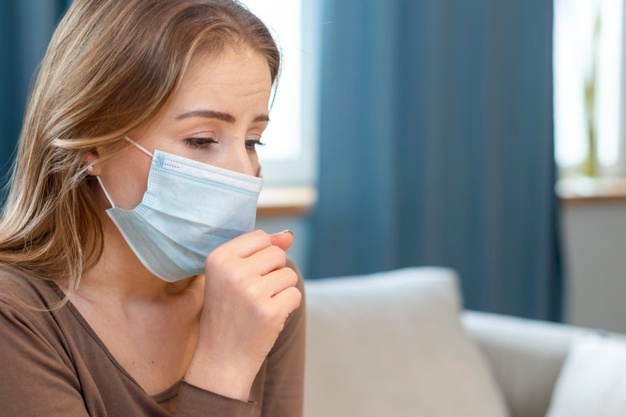Tolerance is an Attitude of Respecting Differences, Understand Its Meaning and Benefits
To understand more deeply that tolerance is an attitude of mutual respect and appreciation of differences, you can read the following reviews.

Kapanlagi.com - In this world, there are various types of contagious diseases that are certainly very dangerous for the body. Contagious diseases themselves are diseases that can be transmitted from a sick person to a healthy person or someone who has not been affected by the contagious disease. These diseases can be transmitted either through intermediaries or directly. Therefore, you must be more cautious so that your body remains healthy and protected from contagious diseases caused by bacteria, viruses, or even hereditary factors. The easiest way to avoid them is by maintaining personal hygiene and the environment.
Because the treatment of contagious diseases cannot be underestimated. The transmission of these diseases occurs in various ways and causes various symptoms. Although some are mild and can be cured simply by resting, there are also several types of contagious diseases that require special treatment such as chemotherapy. That is why you must also be aware and careful to avoid contagious diseases. Here are a series of types of diseases that are easily transmitted and should be aware of.

(credit: freepik)
Chickenpox is one type of contagious disease that can occur to anyone with various symptoms. One of the signs of chickenpox can be recognized by the appearance of rash or red spots on the skin filled with fluid like blisters. The cause of chickenpox itself can occur due to an infection of the varicella-zoster virus (VZV). Chickenpox can easily be transmitted to others through direct contact.
Because chickenpox can be transmitted through several factors such as saliva, coughing, sneezing, or coming into contact with fluid from chickenpox. To avoid getting infected with chickenpox, there are several precautions that you can take such as getting vaccinated, maintaining personal hygiene, consuming nutritious food, and avoiding contact with chickenpox patients.
Next, the contagious disease that you need to know and be aware of is influenza. Influenza or the flu is an inflammatory reaction of the respiratory tract caused by a viral infection. Although it can heal on its own, this disease should not be taken lightly. This type of disease can be transmitted when someone with influenza coughs or sneezes and then it is inhaled by others.
Someone who experiences influenza will have symptoms such as sneezing, sore throat, runny nose, cough, weakness, headache, mild fever, and watery eyes. This disease can be prevented by always maintaining personal hygiene and the environment.

(credit: freepik)
Tuberculosis or better known as a respiratory tract infection is also a contagious disease that should not be taken lightly. This disease caused by the bacterium Mycobacterium tuberculosis tends to infect the lungs compared to other parts of the human body.
The symptoms of this disease are experiencing persistent cough with phlegm for more than two weeks. In addition, the patient will also lose appetite, experience weight loss, sweat at night, and fatigue.
This disease can be transmitted through the air when in close proximity to a patient. Therefore, you should also maintain distance from tuberculosis patients or protect yourself by using a mask. In addition, you can avoid or use items used by tuberculosis patients.
Typhoid is also one of the infectious diseases that is widely suffered by the Indonesian people. This disease is a group infection caused by the bacterium Salmonella typhi. The symptoms of typhoid include fever, muscle pain, headache, constant fatigue, loss of appetite, stomach pain, and the appearance of red spots.
To prevent typhoid, it can be done by avoiding direct contact with patients for a long period of time. In addition, also avoid the habit of using personal items together.

(credit: freepik)
Hepatitis is certainly one of the infectious diseases that is not unfamiliar. Hepatitis can be caused by various disease conditions and the most common cause is viral infection. Hepatitis consists of several types, namely hepatitis A, B, C, D, and E. However, the most commonly encountered are hepatitis A, B, and C. The symptoms of this disease include fever, joint pain, abdominal pain, and jaundice.
Hepatitis can cause complications such as liver failure, cirrhosis, or liver cancer. To prevent transmission, you need to take precautions such as maintaining food hygiene, avoiding body fluid exchange, and avoiding the use of personal items.
Dengue fever is a contagious disease caused by the Aedes Aegypti mosquito carrying the dengue virus and should not be taken lightly. If the patient with DBD is not treated promptly, their life is at stake.
The common symptoms of DBD are high fever, joint pain, red spots on the skin, and a drastic decrease in platelet count. As a first step to prevent the spread of the Aedes Aegypti mosquito and dengue virus, you can implement the 3M approach (cover, drain, and bury). This includes covering storage areas, draining water containers, and burying trash.

(credit: freepik)
Pneumonia is an inflammation of the lungs caused by infection. This contagious disease can cause mild to severe symptoms. Pneumonia patients may experience pain while breathing due to disrupted oxygen intake.
The transmission of pneumonia occurs through air contaminated by bacteria and viruses. To prevent it, you should regularly wash your hands, cough and sneeze with proper etiquette, and avoid sharing eating and bathing utensils with others.
Measles is one of the serious diseases that needs to be treated, especially in babies and children. The cause of measles is a virus that belongs to the paramyxovirus group. The symptoms caused by measles patients are the appearance of red rashes all over the body, accompanied by cough, runny nose, and fever. This disease can be transmitted through droplets of saliva from the patient when coughing or sneezing. Measles itself can be prevented by vaccination when the child is still a toddler.
Those are some of the most easily contagious diseases that you need to be aware of. By knowing the types of contagious diseases, you can also take preventive measures. Hopefully, it will be beneficial.
(kpl/dtm)
Cobain For You Page (FYP) Yang kamu suka ada di sini,
lihat isinya
To understand more deeply that tolerance is an attitude of mutual respect and appreciation of differences, you can read the following reviews.
The types of fabric used as materials for making clothes are indeed very diverse. Each type, of course, has different characteristics. So that you don't make mistakes when buying, here are the types of fabric used for clothes.
Being an editor sometimes requires creative, imaginative, and meticulous thinking in order to produce interesting and accurate works. Here are some super cool and creative editor quotes.
In medical terms, this condition is also known as tinnitus. The cause of ringing ears can occur due to various factors.
These are some procedures for umrah according to sharia that you must know. What are these procedures? Let's check it out KLovers.
Actually, there are several types of gymnastics that you can know. Where each type of gymnastics has its own characteristic movements and functions. Here are the types of gymnastics along with their benefits for health that you need to know.
Storyboard is a term commonly used to refer to sketch drawings arranged according to scenes or stories in a film or video script. Moreover, there are still many interesting things about storyboards that you need to know. Check out the review here.
There are various common causes of poverty, one of which is related to inequality such as education.
This is the procedure for aqiqah in accordance with the Sunnah of the Prophet Muhammad along with guidance and its law. What are the procedures? As reported from various sources, let's check it out KLovers.
Mosquitoes are one of the insects that people avoid because they can transmit diseases. It is important for you to know what types of mosquitoes are the most dangerous because they carry diseases.
Here are some correct ways to repent in accordance with Islamic Sharia. Curious about how? Let's check it out, KLovers.
The elements in nonfiction books are important for writers and readers. So, what are the elements of nonfiction books? Check out the review below.